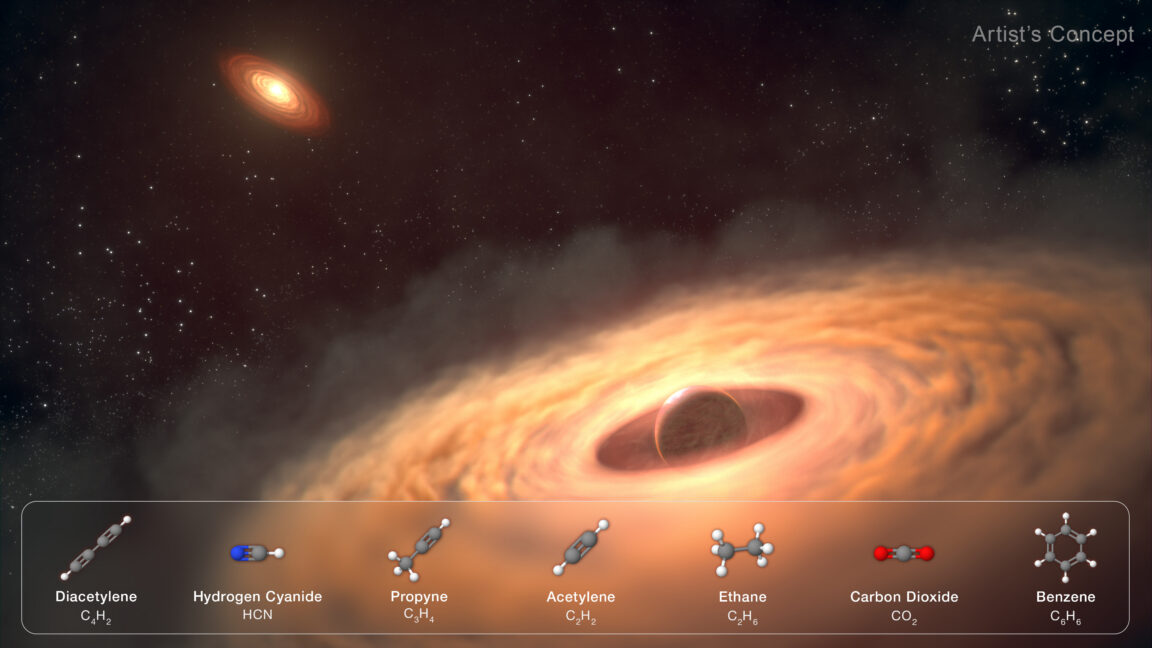
Many of the most interesting bodies in our Solar System aren’t planets, but the moons that orbit them. They have active volcanoes, hydrocarbon oceans, geysers, and moon-wide oceans buried under icy crusts. And, as far as we can tell, the physics of the processes that produce large planets should make moon formation inevitable. Given how common planets are, our galaxy should be teeming with moons.
Yet, despite some tantalizing hints, we’ve not found a clear indication of a moon orbiting an exoplanet. What we have found are a few very young exoplanets that appear to have moon-forming disks around them. Now, the James Webb Space Telescope has obtained a spectrum of the ring-forming disk around a giant super-Jupiter, and found that it’s rich in small carbon-based molecules. That’s despite the fact that the star it’s orbiting seems to have a planet-forming disk that’s mostly water.
Finding disks
We search for exo-moons and moon-forming disks using completely different methods. To spot an actual moon, we rely on its gravitational influence. At some points in its orbit, it will be towing its planet forward to speed up its orbit; at others, it will be holding its planet back. This introduces subtle variations in the timing of when the planet arrives in front of the star from Earth’s perspective.
(The moon should also block out a bit more of the star’s light at different points in its orbit, but this can easily be masked by variability in the star itself.)
Moon-forming disks, however, are only present early in an exosolar system’s history. They are a bit like larger versions of the rings of Saturn, but with enough material to condense into moons. Over the first few million years of an exosolar system’s history, that material will end up as some combination of dispersed, condensed into moons, or fallen into the planet.


